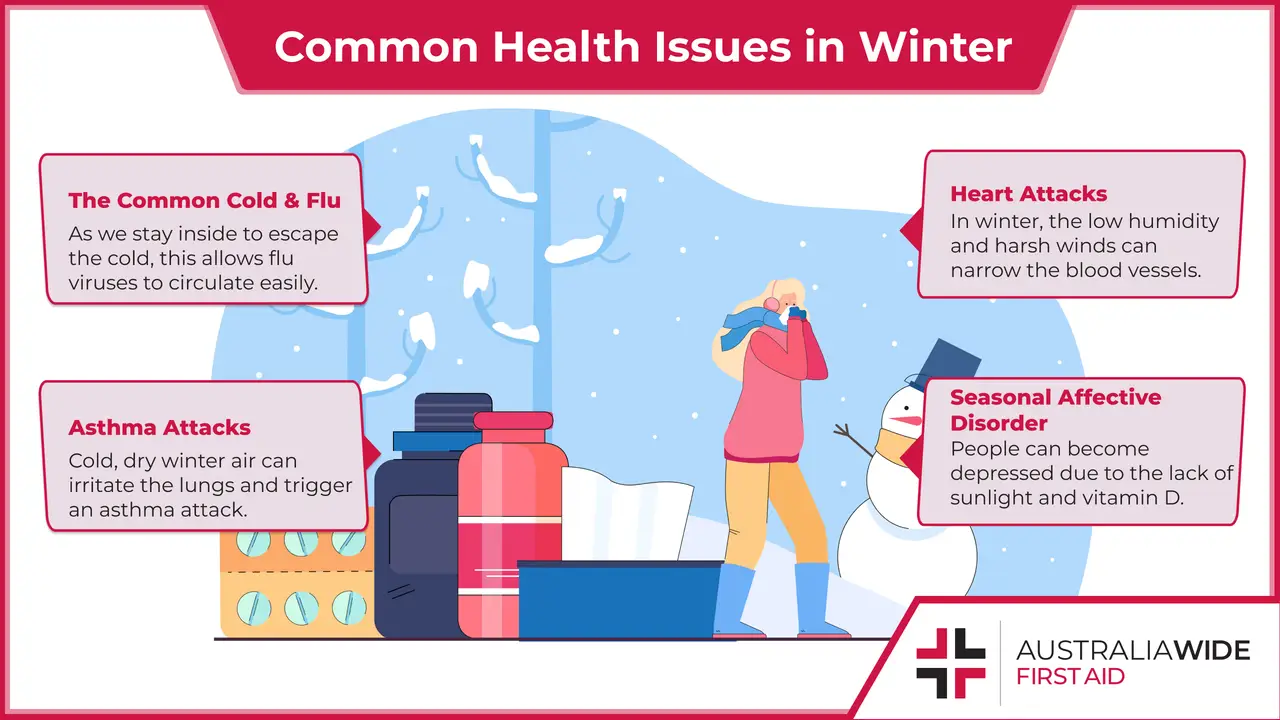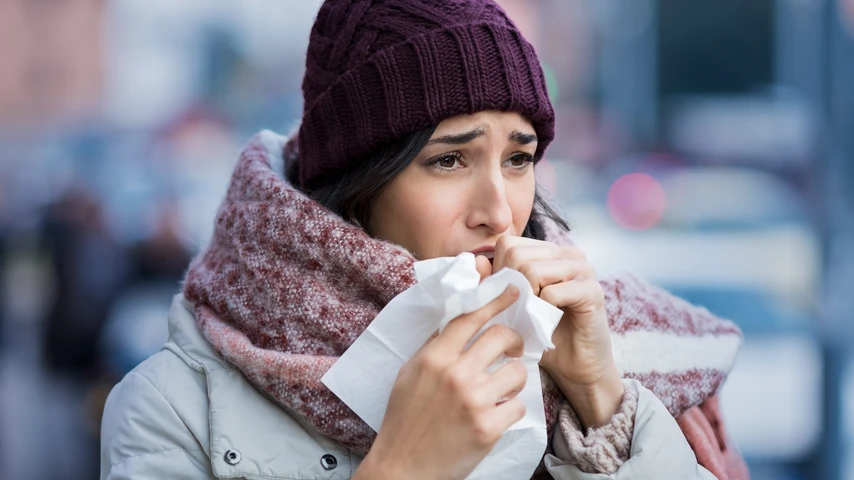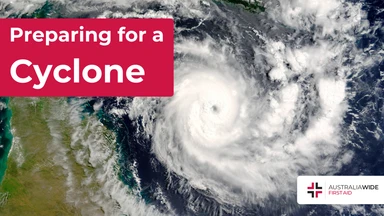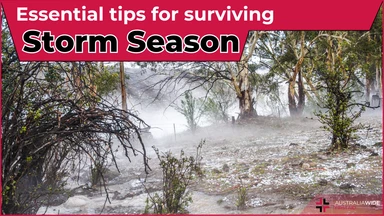Common Health Issues in Winter and How to Beat Them


With winter sweeping across the country, the harsh winds and sudden drop in temperatures can affect our bodies in negative ways.
This frosty time of the year usually takes a toll on our bodies from losing body heat to compromising our immune system.
For some people, winter can even be a health hazard.

Throughout the year, our bodies have become acclimatised to handling temperatures between 28 to 30 degrees Celsius. This is because the normal temperature of the core organs in our body is 37 degrees. At this temperature, our bodies don’t need to spend extra energy to keep warm – making it the ideal temperature for us to survive.
But in cities such as Jindabyne, Canberra, and Hobart where temperatures can drop as low as -8.4 degrees, this external temperature is too low for our organs to survive. Impaired with low temperatures, our body is more susceptible to health complications and at a higher risk to getting sick.
Let’s take a look at four common health complications and how we can avoid them.
Seasonal influenza circulates year-round in Australia but is most common around fall and winter. Experts say that under the right conditions, colder weather enables the flu virus to circulate much easily, allowing them to last longer during the wintertime than other parts of the year. This can be attributed to the human tendency to remain indoors as an escape from the cold. By staying closer and confined within a smaller space, there are higher chances for a person to contract the virus.
Our immune system during this time is much weaker compared to the rest of the year. By being indoors most of the time, this limits our exposure to the sun, and causing our vitamin D levels to plunge. Low levels of vitamin D have been linked to Influenza A and a weakened immune system, according to the American Federation for Medical Research.
The typical symptoms of the flu include:
Most people will recover from the flu in less than two weeks, but some may develop health complications such as bacterial pneumonia, ear infections, sinus infections, inflammation of the heart, bronchitis, and even multi-organ failure.
According to the Department of Health, being vaccinated against the flu is our best bet in being protected. They not only protect the body from getting infected, but also prevent the further health complications from arising if you were to get infected. Check out the following article for information on how to decrease your risk of flu this year!

If you’ve had a history of asthma attacks in the past, this is most likely to worsen during the winter season. Asthma is an inflammation and obstruction of the bronchial tubes – the passages that allow air to enter and leave the lungs. During an asthma attack, the muscles that surround the bronchial tubes constrict, narrowing the air passages and making it extremely difficult to breathe.
Some symptoms of asthma attacks include:
In winter, the possibility of an asthma attack may increase due to the dry outside air. As the airways in our lungs are protected by a layer of fluid, this evaporates when exposed to the cold. This causes the lungs to become inflamed and irritated, triggering an asthma attack.
Cold, dry air and sudden shifts in the weather can irritate our airways, causing our body to produce more mucus than usual. This increases our chances of getting respiratory infections – these infections may lead to swelling and irritation of the airways, which may trigger asthma symptoms.
Some ways that you can avoid asthma attacks during winter include:
You can find more tips on how to avoid asthma attacks here. If you’re susceptible to asthma attacks, sign up to our First Aid Course and learn what you can do when an asthma attack happens.
Heart attack can occur during any season, but there is an increased risk during this season.
What is a heart attack? Essentially, it is a serious medical emergency whereby the supply of blood to the heart is suddenly blocked.
In winter with low humidity, harsh winds and cold temperature, these factors play a major role in increasing the risk heart attacks. These conditions may trigger the body to negatively respond such as increasing nervous system activity, narrowing the blood vessels, and thickening the blood.
Some signs of a heart attack include:
With an increased risk of heart attacks, this can cause other more serious complications. This is often due to heart muscle damage that can have long-term consequences on the body. Some complications include:
During the winter months, it is important to continue leading a healthy lifestyle that will reduce the risk of heart attacks. This includes eating a heart-healthy diet, protecting yourself from the cold, avoiding strenuous activities, and seeking medical attention immediately if you spot any of the signs listed above.
Seasonal affective disorder (SAD) is a type of depression that is related to changes in the seasons. Most sufferers of SAD often experience symptoms starting from fall and continuing into the winter months where people may feel “down” when the days get shorter – some people also call this the “winter blues”.
It’s understood that the main cause can be attributed to the reduced amount of sunlight and lack of vitamin D. The lack of exposure to the sun during the shorter autumn and winter days might stop a part of the brain called the hypothalamus from working properly.
This can affect the brain in several ways:
However, some people may experience depressive episodes during the spring and summer months, but this is less common.
SAD is more common in people with major depressive disorder (MDD) or bipolar disorder (BD). People with SAD tend to have other mental disorders as well, such as attention-deficit/hyperactivity disorder (ADHD), an anxiety disorder, or panic disorder.
It’s been reported that SAD sometimes runs in families and are more common in people who have relatives with other mental illnesses, such as MDD or schizophrenia.
For people prone to SAD or have a history of mental illnesses in the past, there are some ways to feel better during the winter months such as:
During this time, it’s important to maintain social connections with those you care about. Living in isolation, especially during the pandemic, can be difficult. Check out some of our tips on how to maintain your mental health in isolation.
Be careful this winter and take precaution if you’re susceptible to any of these four health complications.
To find out how to identify and respond to any of the health complications mentioned above (i.e. asthma attack, heart attack, SAD), head to one of our First Aid courses to learn the signs and what you can do to save someone’s life.

March 3, 2025
Injuries during cyclones often result from flying debris, collapsing structures, and flooding. Knowing basic first aid can help prevent further harm while waiting for emergency services.

March 3, 2025
If a cyclone makes landfall, meaning that it crosses from the sea onto land while still being strong enough to be classified as a cyclone, the damage it can cause can be disastrous. Preparation is key to minimising the risks associated with cyclones. The damaging weather can last for days, exacerbating risks as hazards intensify.

November 1, 2024
Severe storms are a common and dangerous occurrence in Australia, particularly in regions like Queensland. These storms can bring large hail, damaging winds, heavy rain, and occasionally tornadoes, all of which can put both people and property at risk. Preparing for and responding to severe storms effectively is key to ensuring safety.